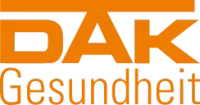Is DAK-Gesundheit the Best Public Health Insurance for You in Germany?
With over 5.6 million members, DAK-Gesundheit is one of Germany’s largest public health insurance providers (GKV). But with growing competition from insurers like TK, AOK, and Barmer — how does DAK hold up in 2025?
Whether you’re a student, freelancer, family, or expat, this guide will help you decide if DAK is the right choice based on coverage, pricing, digital tools, user experience, and real-world feedback.
What is DAK-Gesundheit?
DAK-Gesundheit (Deutsche Angestellten-Krankenkasse) is a major statutory health insurance provider in Germany. Founded from a merger of several employee-based insurance funds, it now serves millions across the country.
- Headquarters: Hamburg, Germany
- Type: GKV (Statutory/Public)
- Special focus: Preventive health, family support, long-term care
GKV vs PKV – What You Need to Know
In Germany, healthcare operates under two systems:
- GKV (Gesetzliche Krankenversicherung): Public health insurance, mandatory for most residents earning under ~€73,800/year.
- PKV (Private health insurance): Optional for high earners, civil servants, or the self-employed.
DAK-Gesundheit falls under GKV, making it a good fit for employees, students, families, and expats who need affordable, comprehensive coverage with legal guarantees.
What Does DAK-Gesundheit Cover?
Standard GKV Benefits (Mandated by Law)
Like all GKV providers, DAK must provide:
- Outpatient and inpatient care
- Medication coverage
- Chronic disease and maternity support
- Sick pay (after 6 weeks of illness)
- Family coverage for non-working dependents
DAK-Specific Extras
DAK goes beyond the legal minimum with:
- Dental benefits: Subsidised cleanings, orthodontics
- Osteopathy reimbursements (up to 3 sessions/year)
- Alternative therapies (e.g. homeopathy, acupuncture)
- Digital health programs for stress, sleep, diabetes
How Much Does DAK-Gesundheit Cost in 2025?
Contribution Rates
- Base rate (set by law): 14.6%
- DAK’s additional premium (Zusatzbeitrag): ~1.7%
- Split between employee & employer (each pays ~50%)
If you’re freelance or self-employed, you pay the full contribution. DAK’s rate is slightly above average, but includes more add-ons than budget GKV providers.
Out-of-Pocket Costs
- Hospital stays: €10/day (max 28 days/year)
- Prescriptions: €5–10 co-pay
- Optional extras: Glasses, travel vaccines, alternative treatments
How to Save
- Join DAK’s Bonusprogramm (earn up to €150/year)
- Combine with private supplemental insurance
- Track preventive exams and gym sessions for rewards
Digital Tools: Is the DAK App Any Good?
DAK App Features
- Upload doctor’s notes
- Submit claims and documents
- Access your health insurance card
- Receive reminders for checkups and appointments
While the app is functional, it’s not as intuitive or polished as TK’s or Barmer’s apps. However, DAK has improved multilingual support and offers English-language onboarding materials.
Telemedicine & eHealth
- Supports DiGA-approved apps (digital therapy tools)
- Offers video doctor consultations through partners
- Syncs with Apple Health and Google Fit for bonus tracking
Bonus & Prevention Programs
DAK Bonusprogramm
DAK rewards you for healthy habits like:
- Regular checkups
- Gym memberships or sports clubs
- Vaccinations
- Certified courses (stress management, back pain prevention)
Earn up to €150/year in payouts or reimbursements. You can track everything via the app.
Lifestyle and Mental Health Support
DAK offers certified ZPP prevention courses, including:
- Nutrition coaching
- Addiction support
- Stress reduction programs
- Burnout prevention
Many of these are 100% reimbursed if booked through approved providers.
Who Should Consider DAK-Gesundheit?
Ideal Users
- Families: Excellent maternity and childcare support
- Employees: Balanced costs and services
- Expats/Students: Accepted for visa applications, English materials available
- Older users: Long-term care and chronic illness support
Not Ideal For
- Tech-savvy freelancers: Better digital experiences exist (TK)
- Price-sensitive users: Lower Zusatzbeitrag options exist
- Freelancers with variable income: PKV may be more flexible short term
Real User Feedback
What People Like
✅ Solid family and maternity services
✅ Strong preventive health programs
✅ Reliable in-person support in urban areas
Common Complaints
❌ App feels outdated
❌ Long wait times on hotline during peak hours
❌ Paper-based processes for some reimbursements
How Does DAK Compare?
| Feature | DAK | TK | AOK | Barmer |
|---|---|---|---|---|
| Zusatzbeitrag (2025) | ~1.7% | ~1.2% | ~1.4% | ~1.5% |
| App Rating | 3.5/5 | 4.5/5 | 3.5/5 | 4.2/5 |
| Bonus Programme | ✅ €150 | ✅ €100 | ✅ €50 | ✅ €100 |
| English Onboarding | ✅ | ✅ | Partial | Partial |
DAK ranks middle-to-high in cost, but is a top contender for prevention and family services.
Underrated Features of DAK-Gesundheit
1. Pregnancy & Baby Bonuses
- €100+ in rewards for prenatal courses, midwife visits
- Birth preparation classes
- Support hotline for expectant mothers
2. Chronic Disease Management
- Tailored support for diabetes, asthma, and heart disease
- Personal care managers
- Regular progress check-ins and education
3. Long-Term Care Integration
- Caregiver support for family members
- Elderly support via Pflegeversicherung
- Coordination with home care services
Common Pain Points (and How to Solve Them)
❗ “DAK is too bureaucratic”
✅ Use the app for digital documents
✅ Ask a broker to help with setup and claims
❗ “The app is too basic”
✅ Combine digital tools with physical service centers
✅ Future roadmap includes a new app interface (expected late 2025)
❗ “It’s more expensive”
✅ Compare value, not just cost — bonus payouts and extras often make up for the difference
Alternatives Worth Considering
DAK vs TK vs AOK vs Barmer
- TK: Best app, low Zusatzbeitrag, fewer bonus extras
- AOK: Lower pricing, fewer digital tools
- Barmer: Great digital tools and mental health support
DAK stands out for preventive care and family focus, not price or app design.
What About PKV?
Private insurance may be better if:
- You’re a high-income freelancer
- You want premium hospital access
- You don’t plan to switch back to GKV (difficult later)
Caution: PKV costs can rise steeply with age or dependents.
Add-Ons to Boost GKV
Consider pairing DAK with supplemental insurance:
- Dental: Barmenia, Ottonova, HanseMerkur
- Hospital: Single room, chief physician
- International Travel: Often under €10/year
Hidden But Crucial Tips
- DAK is accepted for German visa applications — ideal for expats and students
- You’re locked into GKV for 12 months — plan your move
- Service quality varies by region — urban areas have better support
Busting Common Myths
“All GKV insurers are the same.”
❌ False. They vary by app quality, bonus programmes, and additional services.
“Cheapest = best.”
❌ Not always. Paying €5–€10 more/month could mean getting €100+ in extra value.
Common Mistakes to Avoid
- Ignoring the Bonus Program – You’re missing free money
- Only comparing rates – Forgetting the value of extras
- Not registering dependents – Your child or spouse won’t be covered automatically!
Final Verdict: Is DAK-Gesundheit Worth It?
YES — if you value prevention, family support, and real-world service.
NO — if you’re ultra tech-focused or on a tight budget.
In 2025, DAK remains a reliable GKV option with a strong prevention ethos and excellent family benefits — but it’s not the best for every profile.
Actionable Takeaways
- Compare DAK’s Zusatzbeitrag to other GKV providers
- Use the Bonusprogramm to save €100+ yearly
- Talk to a licensed broker for onboarding help — especially if you’re new to Germany





